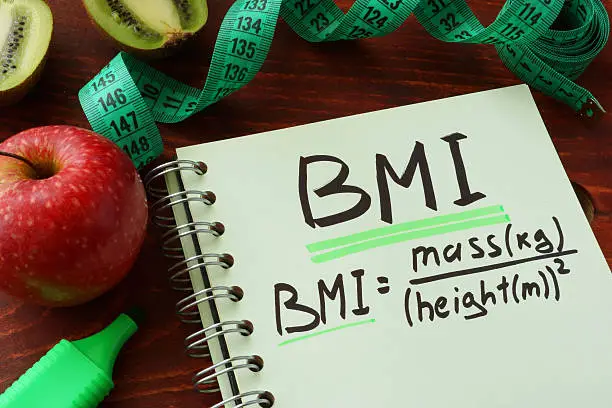The BMI may be determined first by measuring its components by means of a weighing scale and a stadiometer. The multiplication and division may be carried out directly, by hand or using a calculator, or indirectly using a lookup table (or chart). The table displays it as a function of mass and height and may show other units of measurement (converted to metric units for the calculation). The table may also show contour lines or colour for different categories.

overview of BMI
The modern term “body mass index” (BMI) for the ratio of human body weight to squared height was coined in a paper published in the July 1972 edition of the Journal of Chronic Diseases by Ancel Keys and others. In this paper, Keys argued that what he termed the BMI was “if not fully satisfactory, at least as good as any other relative weight index as an indicator of relative obesity”
BMI provides a simple numeric measure of a person’s thickness or thinness, allowing health professionals to discuss weight problems more objectively with their patients. It was designed to be used as a simple means of classifying average sedentary (physically inactive) populations, with an average body composition. For such individuals, the value recommendations as of 2014 are as follows: 18.5 to 24.9 kg/m2 may indicate optimal weight, lower than 18.5 may indicate underweight, 25 to 29.9 may indicate overweight, and 30 or more may indicate obese. Lean male athletes often have a high muscle-to-fat ratio and therefore that is misleadingly high relative to their body-fat percentage.

Limitations
The medical establishment and statistical community have both highlighted the limitations of BMI. Part of the statistical limitations of the BMI scale is the result of Quetelet’s original sampling methods. As noted in his original work, A Treatise on Man and the Development of His Faculties, the data from which Quetelet derived his formula was taken mostly from Scottish Highland soldiers and French Gendarmerie. It was always designed as a metric for European men. For women, and people of non-European origin, the scale is often biased. As noted by Sabrina Strings in her book Fearing the Black Body: The Racial Origins of Fat Phobia, It is largely inaccurate for black people especially, disproportionately labelling them as overweight even for healthy individuals.
Use (APPLICATION)
The BMI is generally used as a means of correlation between groups related by general mass and can serve as a vague means of estimating adiposity. The duality of it is that, while it is easy to use as a general calculation, it is limited as to how accurate and pertinent the data obtained from it can be. Generally, the index is suitable for recognizing trends within sedentary or overweight individuals because there is a smaller margin of error. It has been used by the WHO as the standard for recording obesity statistics since the early 1980s.

What is the healthiest number?
under 18.5 – This is described as underweight. between 18.5 and 24.9 – This is described as the ‘healthy range’. between 25 and 29.9 – This is described as overweight. between 30 and 39.9 – This is described as obesity.
if your BMI is less than 18.5, it falls within the underweight range. If your is 18.5 to 24.9, it falls within the Healthy Weight range. If your is 25.0 to 29.9, it falls within the overweight range. If your BMI is 30.0 or higher, it falls within the obese range.
